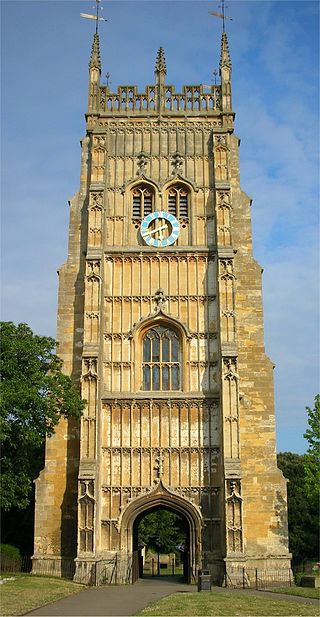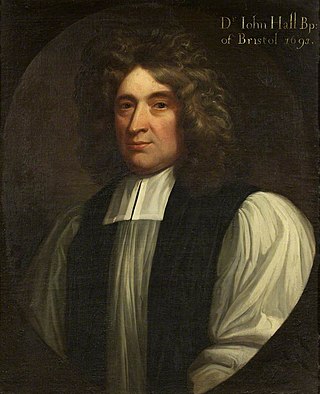Related Research Articles

Evesham Abbey was founded by Saint Egwin at Evesham in Worcestershire, England between 700 and 710 following an alleged vision of the Virgin Mary by a swineherd by the name of Eof.
Robert Cairncross was a Scottish bishop.
John Whethamstede was an English abbot and one of the leading literary figures in fifteenth-century England.</ref>
Rainald was a prominent Abbot of Abingdon.
Faritius was an Italian Benedictine Abbot of Abingdon and physician.
Adam of Dryburgh, in later times also known as Adam the Carthusian, Adam Anglicus and Adam Scotus, was an Anglo-Scottish theologian, writer and Premonstratensian and Carthusian monk.

Thurcytel was abbot of Crowland and perhaps also of Bedford Abbey.

Sir Thomas Knollys or Knolles was an English businessman in London who was active in both local and national government.
William More was appointed Bishop of Colchester to deputise within the Diocese of Ely under the provisions of the Suffragan Bishops Act 1534 in 1536 and held the post until his death in 1541. Educated at Cambridge University.
Robert Parfew was an English Benedictine abbot, at the time of the dissolution of the monasteries, and bishop successively of St Asaph and Hereford.
Adam de Senlis, also called Adam of Evesham, was a Benedictine monk who became abbot of Evesham Abbey.

John Hall (1633–1710) was an English churchman and academic, Master of Pembroke College, Oxford, and Bishop of Bristol. He was known as the last of the English bishops to hold to traditional Puritan views.
John Chambers was an English Benedictine, the last Abbot of Peterborough and first Bishop of Peterborough.
Seth Holland was an English Roman Catholic churchman, Dean of Worcester and Warden of All Souls' College, Oxford under Queen Mary, but imprisoned in the Marshalsea under Elizabeth I, where he died.
Albinus was an abbot of St Augustine's Abbey, Canterbury. He assisted Bede in the compilation of his Historia Ecclesiastica, and what we know concerning him is chiefly derived from the dedicatory epistle at the beginning of that work. Albinus was a pupil of Archbishop Theodore and his coadjutor Adrian of Canterbury, abbot of St. Peter's. Through the instructions of the latter he became not only versed in the Scriptures, but likewise a master of Greek and Latin. On the death of Adrian, Albinus succeeded to the abbacy, being the first native Englishman who filled that post. Bede in his epistle says that he was indebted to Albinus for all the facts contained in his history relating to the Kentish church between the first conversion of the English and the time at which he was writing. Much of this information was collected by the presbyter Nothelm, who, at the instigation of Albinus, undertook a journey to Rome and searched the archives there. Nothelm was the medium of communication between Bede and Albinus, for it does not appear that the two ever met. Albinus died in 732, and was buried beside his master Adrian.
Anthony Maxey, was the Dean of Windsor.
Richard Elford was an English singer, the leading figure in his field in Queen Anne's London.
Richard of Barking was an English Benedictine, the Abbot of Westminster, and a leading judge.
Roger Norreis was Abbot of Evesham in England. He was a controversial figure, installed in several offices against opposition. In his appointment to Evesham, he was accused of immoral behaviour and failing to follow monastic rules. In 1202, Norreis became embroiled in a dispute with his monks and his episcopal superior the Bishop of Worcester; litigation and argumentation lasted until his deposition in 1213. He was then appointed prior of a subsidiary monastic house of Evesham, but was deposed within months, then re-appointed to the office five years later.
Richard Bellamy (1743?–1813) was an English bass singer and composer. One of the chief bass singers of his day, his career included appointments at the Chapel Royal, St. Paul's Cathedral and Westminster Abbey.
References
- ↑ Midland history, Volume 7 University of Birmingham, Phillimore., 1982